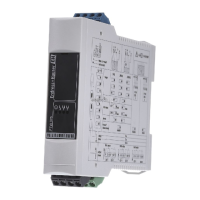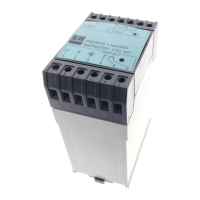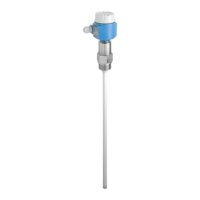2
Functions and system design
Measuring principle Signal transmission
The intrinsically safe signal input of the Nivotester FTL 325 P limit switch is galvanically isolated
from the mains and the output.
The Nivotester powers the Liquiphant or Soliphant measuring sensors with a two-wire DC loop
and receives a frequency which signals whether or not the limit has been reached.
The power supply is superimposed with current pulses (PFM signals) from the measuring
transmitter. They have a pulse width of approx. 200 µs and a current strength of approx. 10 mA.
Signal evaluation
The Nivotester evaluates the frequency and switches the output relay for the level alarm.
The relay switching state is displayed by a yellow LED on the front panel of the Nivotester.
Fail-safe circuit
By correctly selecting the fail-safe circuit, you can ensure that the relay always works with
quiescent current safety.
• Maximum safety: the relay drops out when the switching point is exceeded
(measuring sensor covered), a fault occurs or the power supply fails.
• Minimum safety: the relay drops out when the switching point is undershot
(measuring sensor uncovered), a fault occurs or the power supply fails.
L00-FTL325Px-15-06-xx-en-001
Function of the level limit signal and the current pulse dependent on level and fail-safe circuit.
For application with requirements for functional safety in accordance to IEC 61508 (SIL),
please note Safety Manual SD 111F.
I
ca.150 Hz
t
I
ca.150 Hz
t
I
t
ca.50 Hz
I
t
ca.50 Hz
Tuning fork
free
Tuning fork
covered
Level
Maximum
safety circuit
Minimum
safety circuit
Current pulseCurrent pulse
Current pulseCurrent pulse
CH1...3
CH1...3
CH1...3
CH1...3
4 5 6
22 23 24
26 27 28
4 5 6
22 23 24
26 27 28
4 5 6
22 23 24
26 27 28
4 5 6
22 23 24
26 27 28

